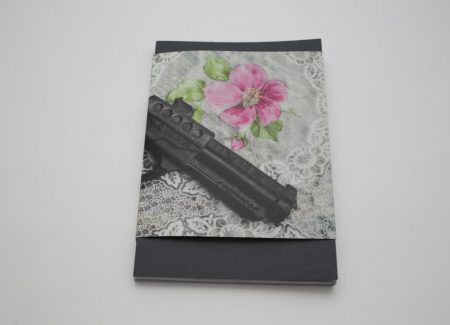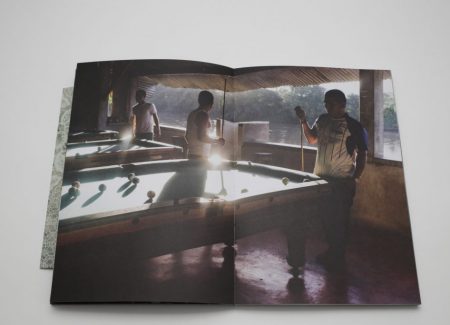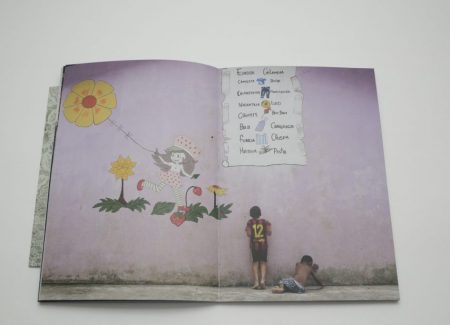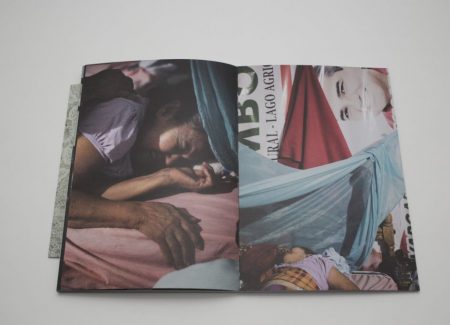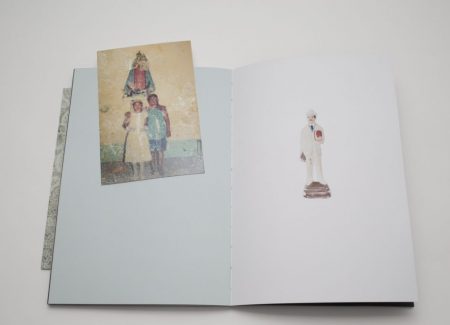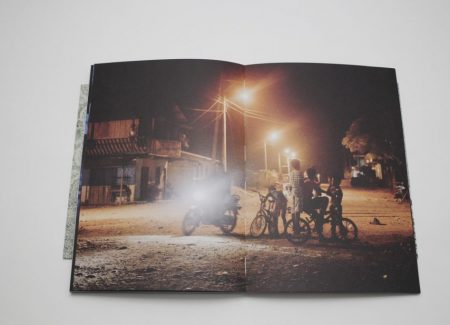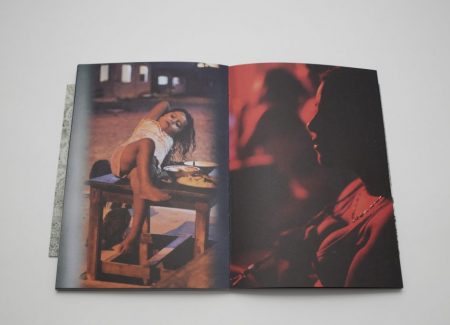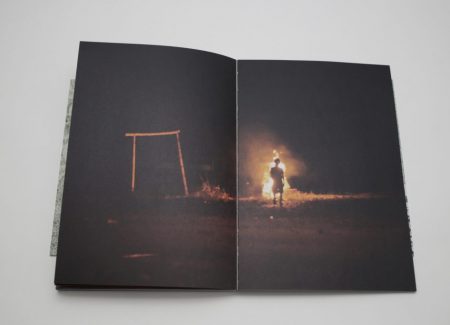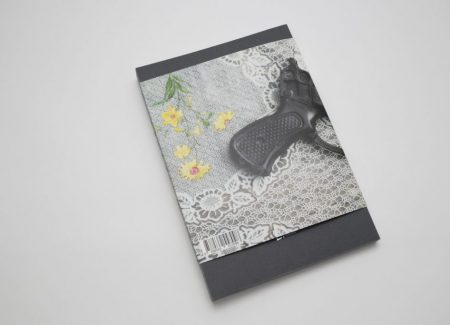JTF (just the facts): Published by Editora Madalena in 2016 (here). Softcover with a dust jacket, 116 pages, with 55 color photographs and 5 postcards. Includes an essay by the artist. In an edition of 1000 copies. (Cover and spread shots below.)
Comments/Context: When Misha Vallejo decided to document life in a small village on the border of Ecuador and Colombia, his family and friends called him mad. “You’re gonna get mugged, kidnapped or killed!”, they warned him. Puerto Nuevo, located in a remote area on the banks of the San Miguel River, was founded in 2001 by the displaced people who were fleeing the armed conflict in Colombia. Its residents, about five hundred today, were quickly forgotten by both governments, leaving the families with very limited access to health care or any other social services. In August and September of 2014, Vallejo left his comfort zone and spent those months in Puerto Nuevo, living with Don Juan Escobar, the president of the village, and his family. The photographic results from that visit were published last year as a vibrant photobook entitled Al Otro Lado (in translation from Spanish “On the other side”).
Al Otro Lado is a softcover book with an open spine. Its dust jacket depicts a black gun on a tablecloth with flowers. “Made in China” prominently appears on the gun, hinting it is a toy, and this juxtaposition of flowers and a gun, colors and darkness, sets the metaphorical feeling of a boundary, creating a one-side-and-the-other mood.
The first photograph in the book is a full spread; it shows us two girls and a boy at the river, near the jutting angle of a boat, photographed from a high angle. The image has soft dappled light and dynamic framing, turning the mundane into something quietly idyllic. But one of the following images disrupts this easy going fantasy – a uniformed soldier, whose upper body is cropped out, looms large on the street, taking up most of the frame, with two women passing by in between a second military figure. It’s clear that the locals are walking a thin line, mixing casual everyday life and the potential violence of the border.
Puerto Nuevo is a border town, and its river both unites and separates people. And while the river dominates the setting of the town, and defines its rhythms of work and play, Vallejo’s story about Puerto Nuevo is ultimately about people. He documents the nuances of this marginalized and forgotten community, showing it in enveloping dynamic color. Having gained the trust of the locals, his photographs of modest houses and interiors give us a more intimate glimpse into their lives, his unobtrusive but bold framing catching people taking a nap, watching TV, or washing in the bathroom. What he finds is a place in improvised transition, where memories of previous lives, in the form of family photographs, cards, and other treasured scraps, decorate the rough plank walls and connect past and present.
To reinforce this idea of physical memory, Vallejo has included reproductions of some of the personal objects he encountered. Throughout the book, there are images of drawings, a ripped playing card, a passport photo, a statue, etc., and postcards with what appear to be vernacular photographs are loosely inserted in among the pages. One of them is a photograph of a young girl as she looks back at us with a soft smile, perhaps taken in a studio. The stains and scratches on these damaged photographs are a visual reminder of both the vagaries of passing time and the harsh lives of their owners.
After sunset, once the temperature drops and people come back from work, the streets of Puerto Nuevo fill with energy and life. Children play on the streets, the bars serve drinks, and the village’s churches welcome residents with small entertainments and signs of hope. Vallejo’s night photographs of these moments of leisure seethe with saturated colors, the warm wash of street lights, and dark shadows.
A number of important Latin American photobooks have gathered together images of life in marginalized communities around the continent, and Vallejo’s Al Otro Lado feels like a welcome contribution this genre. Claudia Andujar photographed the indigenous Yanomamis, José Medeiros documented Candomblé in Bahia, and more recently, Alejandro Chaskielberg captured a rural community living on the banks of the Parana river delta, each body of work telling overlooked stories and doing so with photographic originality and style. Beyond these projects, Vallejo’s choice of colors and skewed framing also brings to mind the work of some of the masters of Latin American photography, like Miguel Rio Branco and Mario Cravo Neto.
In the end, Vallejo’s sensibility makes us look closer at a group of people whose lives might otherwise go unnoticed. Puerto Nuevo is just one of many border towns with similar problems, but his pictures make life in this particular place feel special. Vallejo’s sprinkles of bright color and intimate twists and turns grab our attention, encouraging us to get involved. The alternating images of pleasures and contradictions keep us off balance, forcing us to straddle the river just like his subjects.
Collector’s POV: Misha Vallejo does not appear to have gallery representation at this time. Collectors interested in following up should likely connect directly with the artist via his website (linked in the sidebar).
